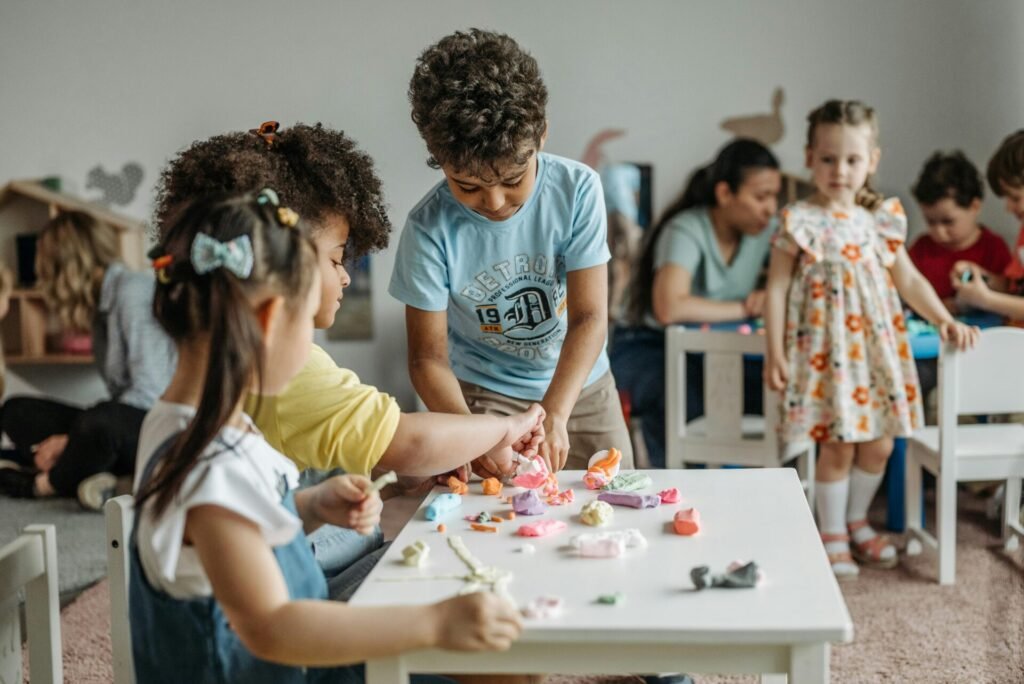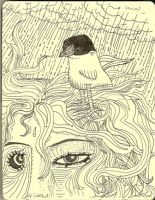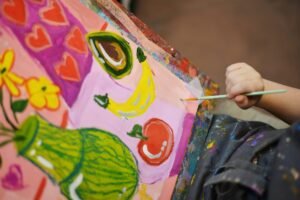Why Art Classes Matter for Kids
If your child loves to draw, paint, or build, you may be wondering how to nurture that creative spark. This guide will help you find local art classes for kids and understand what to look for in a quality program. Whether you’re searching for weekend workshops, after-school programs, or summer art camps, there are more options than ever to support your child’s artistic growth.
Art classes do more than teach drawing or painting—they help children develop fine motor skills, emotional expression, problem-solving abilities, and confidence. Participating in a structured creative environment also encourages social interaction, patience, and perseverance.
From preschoolers to teens, kids benefit from having a space where they can explore materials, learn new techniques, and express themselves freely.

credit: nickdalley
Types of Art Classes Available Near You
Community Art Centers
Local art centers often offer a wide range of classes for different age groups and skill levels. These programs are typically affordable and led by experienced instructors who specialize in working with children.
Look for offerings like:
- Drawing and painting fundamentals
- Mixed media exploration
- Sculpture and clay modeling
- Seasonal or themed workshops
Many centers also host gallery shows or student exhibitions, which can be a great confidence booster for young artists.
Museum-Based Programs
Art museums frequently offer youth workshops, weekend classes, and summer camps. These programs often include guided tours of exhibits followed by hands-on studio time, helping children connect art history with their own creations.
Private Studios and Art Schools
Independent art studios may offer more specialized instruction, such as cartooning, digital illustration, or portfolio development. These are ideal for kids who are serious about art or preparing for high school or college-level programs.
Parks and Recreation Departments
Don’t overlook your local parks and rec department. Many offer budget-friendly art classes for kids, especially during school breaks. These programs are great for casual learners or families looking for flexible scheduling.
Online Art Classes
If in-person options are limited, online art classes can be a great alternative. Many platforms offer live or on-demand lessons in drawing, painting, animation, and more. Look for programs that include interactive feedback or community sharing to keep kids engaged.

How to Find Art Classes for Kids Near You
Use Local Search Tools
Start with a simple search using terms like:
- “art classes for kids near me”
- “children’s art workshops in [your city]”
- “youth art programs [ZIP code]”
Google Maps, Yelp, and Facebook Events can help you discover nearby studios, community centers, and pop-up workshops.
Check Libraries and Schools
Public libraries often host free or low-cost art events for children. Your child’s school may also partner with local artists or nonprofits to offer after-school enrichment programs.
Ask for Recommendations
Word of mouth is powerful. Ask other parents, teachers, or neighbors if they know of any great local art classes. You can also join parenting groups or community forums to get real-time suggestions.
Explore Regional Directories
Websites like KidPass and Makers Mill list creative workshops and summer camps by location and age group. These directories often include reviews, pricing, and registration links.

Sketchbooks.org | TRADITIONAL MATERIALS
Using Watercolors in Your Sketchbooks | Fluid, Dreamlike, Unpredictable
Watercolors transform the ordinary sketchbook into a space where light, pigment, and emotion meet. As fluid as thought and as unpredictable as inspiration itself, watercolor offers a uniquely intuitive way to express depth, mood, and...
What to Look for in a Quality Art Class
Age-Appropriate Instruction
Make sure the class is tailored to your child’s developmental stage. Younger kids need more hands-on guidance and open-ended projects, while older children may benefit from structured lessons and skill-building.
Qualified Instructors
Look for teachers with experience in both art and child development. A great instructor knows how to balance technique with encouragement and can adapt to different learning styles.
Safe, Inspiring Environment
The studio or classroom should be clean, well-lit, and stocked with age-appropriate materials. Bonus points for spaces that display student work or offer sketchbooks for ongoing exploration.
Creative Freedom
The best art classes allow room for experimentation. Avoid programs that focus too heavily on copying or perfection. Instead, look for classes that encourage self-expression and problem-solving.
How Sketchbooks Support Artistic Growth
A sketchbook is more than just a notebook—it’s a creative playground. Many art classes incorporate sketchbooks as a way for kids to practice regularly, track progress, and explore ideas outside of class.
Encourage your child to bring their sketchbook to workshops or use it to reflect on what they’ve learned. It becomes a personal archive of their artistic journey and a tool for building confidence.

Frequently Asked Questions
What age should my child start art classes?
Children as young as 3 can benefit from creative play, but most structured classes begin around age 4 or 5.
How do I know if a class is right for my child?
Look for programs that match your child’s interests, offer age-appropriate instruction, and emphasize creativity over perfection.
Are online art classes effective for kids?
Yes, especially when they include interactive elements, clear instruction, and opportunities for feedback.
What supplies should my child bring?
Most classes provide materials, but a personal sketchbook is always a great addition.
How much do kids’ art classes cost?
Prices vary widely—community programs may cost $10–$20 per session, while private studios can range from $30–$60 or more.
Can art classes help with school performance?
Yes, art supports cognitive development, focus, and problem-solving, which benefit academic learning.
What if my child is shy or hesitant?
Start with a short workshop or parent-child class to ease them in gently.
How often should my child attend art classes?
Weekly classes are ideal for consistency, but even monthly workshops can be valuable.
Final Thoughts
Finding art classes for kids near you is about more than filling time—it’s about nurturing creativity, confidence, and curiosity. Whether your child is a budding illustrator or just loves to get messy with paint, the right class can open doors to lifelong artistic exploration.
Use local resources, ask around, and don’t be afraid to try a few different programs until you find the right fit. And remember: a sketchbook, a supportive environment, and your encouragement are often the best tools of all.
Ready to Share Your Work?













—it’s not just about paint.
ask BEFORE signing up
helpful breakdown of what makes a good program